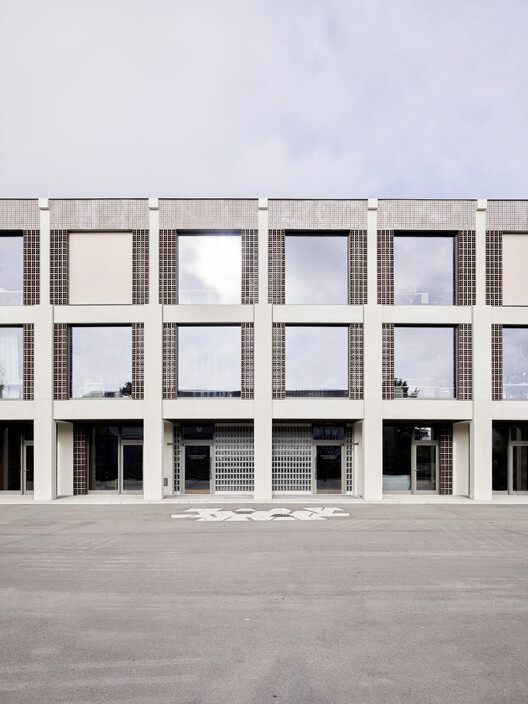
-
Architects: Boltshauser Architekten
- Area: 8600 m²
- Year: 2019
-
Photographs:Kuster Frey
-
Lead Architect: Beat Steuri

Text description provided by the architects. The existing ensemble of the Krämeracker secondary school was expanded to include two new buildings and additional outdoor spaces. The elongated school building is situated parallel to the secondary school building and has the pupils enter via the head building. The new gymnasium is located opposite the existing gymnasiums so that the four building volumes are arranged in a chessboard-like pattern shaping the different outdoor spaces. The new buildings are kept low. Fine vertical and horizontal volume shifts establish spatial relationships with the neighborhood.





















































